Everyone knows that ants are a nuisance. Some ants, like the bull ant, can be extremely aggressive towards humans and deliver painful stings. While other ants, like the black house ant, can invade your home then scavenge food and spread disease. Regardless of the species, no one likes the feeling of having ants in their living space.
If you have an ant infestation on your hands, or you suspect one is in the works, then being able to identify the type of Australian ant can give you a huge advantage in your efforts to get rid of the problem.
In Australia, there are over 1,300 different species of native ants. However, most of these aren’t considered a pest, so it’s unlikely you’ll ever see them. Therefore, you only need to be familiar with a handful of Australian ant types. Let’s take a closer look at each species in more detail.
Got an ant problem that your DIY products can’t solve? Book an appointment with All Bugs today.
Australian Ant Types
Black House Ants (Ochetellus)
One of the most commonly found types of ants. These ants are entirely black in colour, and measure at 2.5 to 3mm in length. They will typically invade homes in search of food and shelter, so any food or dirty dishes left around will become fair game to them.
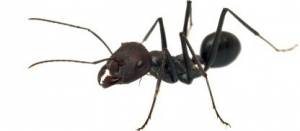
Behaviour: Black ants have the ability to build nests almost anywhere. For instance, cracks in the foundation, near stone pathways, and underneath the house entirely.
Lifecycle: Black ants take around 44 days to grow from a larva into a fully developed adult. Although, this depends on the temperature and availability of food.
Argentine Ants (Iridomyrmex Humilis)
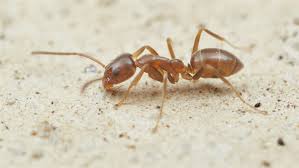 Argentine ants are small dark brown to medium brown ants that measure at around 1.6mm long.
Argentine ants are small dark brown to medium brown ants that measure at around 1.6mm long.
Behaviour: Interestingly, argentine ants are known to be aggressive towards other ant species, and even displace native ants from their existing colonies. On top of this, argentine ants mate in their nest, not in the open as a swarm, so it can be difficult to identify their presence early.
Lifecycle: Most worker argentine ants mate in spring and gradually increase their numbers all the way up to autumn. This is due to the fact they have multiple queens, which allows them to produce and multiply rapidly.
Bull Ants (Mymecia)
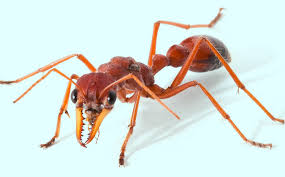 Bull ants are one of the most aggressive species of Australian ants. When disturbed, they will swarm on the intruding presence, and deliver a painful sting directly on the skin. Since the stinger doesn’t remain in their prey, they can deliver repeated stings if necessary.
Bull ants are one of the most aggressive species of Australian ants. When disturbed, they will swarm on the intruding presence, and deliver a painful sting directly on the skin. Since the stinger doesn’t remain in their prey, they can deliver repeated stings if necessary.
Behaviour: Bull ants typically nest in outdoor areas, such as around the soil, piles of logs and rocks, nearby bushes, and around the foundation of the property. Generally speaking, the queen bull ant is in charge of foraging for food, which they often do at night.
Lifecycle: When the queen bull ant needs to nest, she will dig a small chamber and bury her eggs in the chamber. The typically lifecycle of a bull ant goes from egg and larvae trough to pupa and adult. Most bull ants are born female.
Fire Ants (Solenopsis spp)
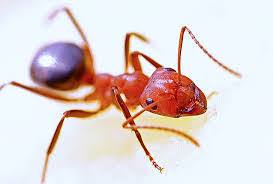 The fire ants body is mostly a light brown colour, except for the abdomen which is darker. They are slightly bigger than other ants on this list, with the queen measuring at 1.59cm long, and the worker fire ants measuring at 3.18mm to 6.35mm long.
The fire ants body is mostly a light brown colour, except for the abdomen which is darker. They are slightly bigger than other ants on this list, with the queen measuring at 1.59cm long, and the worker fire ants measuring at 3.18mm to 6.35mm long.
Behaviour: Fire ants typically build nest mounds close to objects found on the ground. For instance, a pile of logs or rocks. These mounds can reach up to 40cm or higher if given the chance. Similar to bull ants, when aggravated, fire ants can deliver a painful sting. However, they also inject a toxic alkaloid venom known as solenopsin, which can result in a strong burning sensation and even an allergic reaction.
Lifecycle: When fire ants swarm, the males mate with the queen, who eventually looks for a suitable place to lay her eggs. Male fire ants perish after mating. Queen fire ants can lay up to 125 eggs in late spring. The larvae takes around 8 to 10 days to hatch, while the following pupal stage lasts for around 9 to 16 days.
Green Head Ants (Rhytidoponera spp)
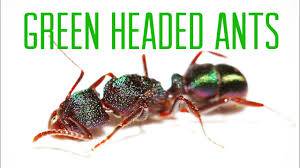 Green ants primarily live in bushy and urban areas. Their appearance is characterised by their combination black and green colour tone. Green ants also produce a distinctive odour which can help you identify their species.
Green ants primarily live in bushy and urban areas. Their appearance is characterised by their combination black and green colour tone. Green ants also produce a distinctive odour which can help you identify their species.
Behaviour: Most green ants feed on vegetables as a source of food. While green ants rarely enter the house, they can establish small colonies near rocks and underneath pathways. When aggravated, a green ant can inflict a painful sting to humans, although the sting is only mild and doesn’t last for long.
Lifecycle: Green ants go through the typical lifecycle of most ants, from an egg through to a larva, pupa, and an adult. Interestingly, male green head ants have the ability to mate with worker ants, not just exclusively with the queen.
Don’t let these invasive Australian ants spoil your home. Contact us today, and let All Bugs effectively resolve your ant problem.
Coastal Brown Ants (Pheidole Megacephala)
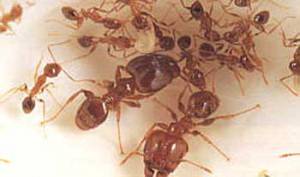 Hence their name, coastal brown ants are easy to spot due to their gold-brownish appearance. They are considered a highly invasive species, as their colonies often have multiple queens, which allows them to multiply rapidly and invade nearby homes and commercial buildings.
Hence their name, coastal brown ants are easy to spot due to their gold-brownish appearance. They are considered a highly invasive species, as their colonies often have multiple queens, which allows them to multiply rapidly and invade nearby homes and commercial buildings.
Behaviour: Coastal brown ants are able to create what is known as ‘super colonies.’ Since they have multiple queens, they can multiply rapidly and spread out quickly. If you find a swarm of coastal brown ants nearby, you should act fast. Although these ants can deliver a sting, it’s usually not very painful.
Lifecycle: Coastal brown ants take around 3 to 4 weeks to hatch. On top of this, the queens can live for several years, and they are able to lay close to 300 eggs per month.
Pharaoh’s Ants (Monomorium Pharaonic)
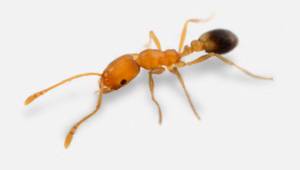 Pharaoh’s ants have a distinctive yellow-brown shade with a slightly darker brown abdomen. Despite having the ability to grow wings, male pharaoh’s ants rarely fly during their lifetime.
Pharaoh’s ants have a distinctive yellow-brown shade with a slightly darker brown abdomen. Despite having the ability to grow wings, male pharaoh’s ants rarely fly during their lifetime.
Behaviour: Pharaoh’s ants have a tendency to reside in hot, humid areas. For instance, the cavities of buildings with a consistent heating system, such as a commercial office. Once inside, these ants search for high protein foods, such as dead insects, meat, fat, and blood.
Lifecycle: The average pharaoh’s ant queen can produce up to 3,500 eggs in their lifetime. Since each colony can have multiple queens, and swarming can take place at any time of the year, these ants can multiply very quickly.
Sugar Ants (Camponotus App)
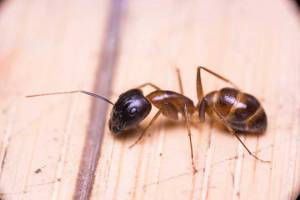 Given their name, sugar ants are often attracted to sweet foods. Fortunately, though, sugar ants will rarely enter your home. However, you should be sure to keep leftover food and open containers away from outside. Sugar ants can grow anywhere from 5mm to 15mm in length, making them one of the largest ant species.
Given their name, sugar ants are often attracted to sweet foods. Fortunately, though, sugar ants will rarely enter your home. However, you should be sure to keep leftover food and open containers away from outside. Sugar ants can grow anywhere from 5mm to 15mm in length, making them one of the largest ant species.
Behaviour: Sugar ants can nest in a variety of places, such as bushes, shrubs, holes in wood, and the roots of plants. Generally speaking, sugar ants are dormant during the day yet most active at night. While they cannot sting, they do have strong mandibles that bite, along with the ability to spray acid from their abdomens.
Lifecycle: Sugar ants are generally most active during the warmer seasons. Just like the coastal brown ants, these ants have multiple queens, which allows them to reproduce very quickly.
Do you have one of these Australian ant types in your home? Contact us today, and let All Bugs get rid of your ant problem for good.


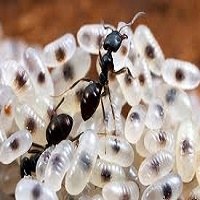
Leave a Reply